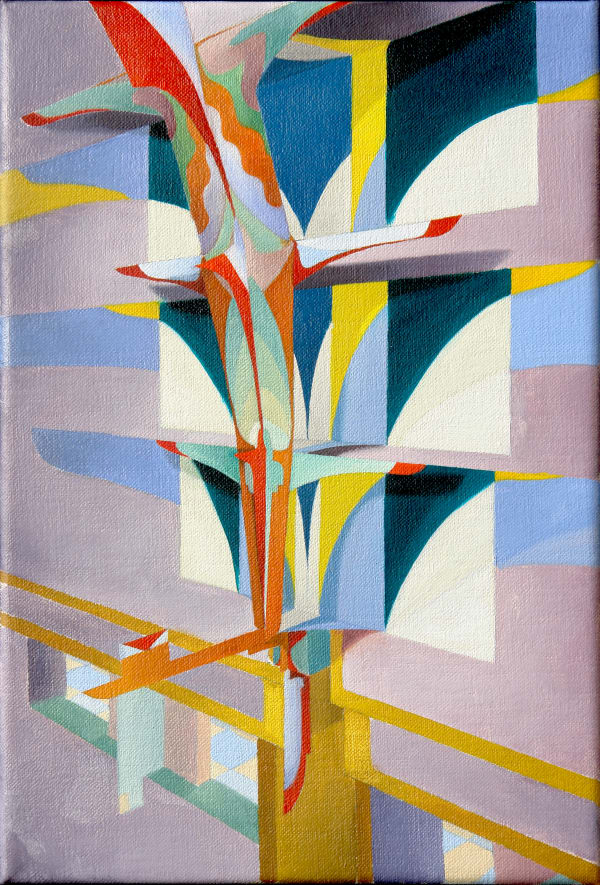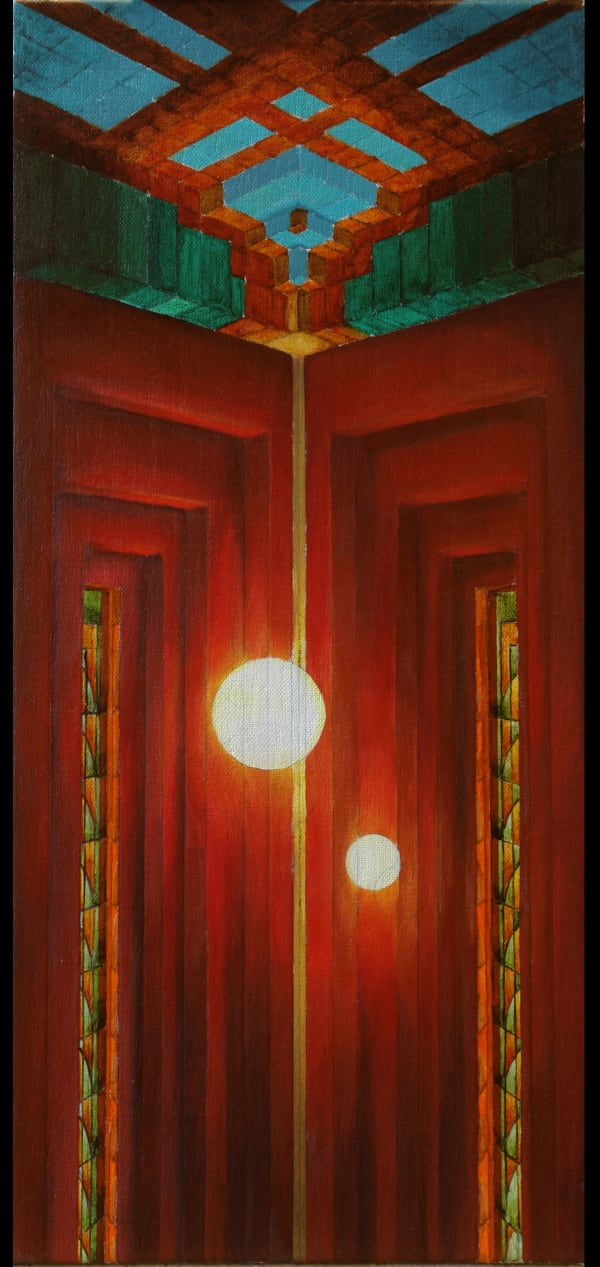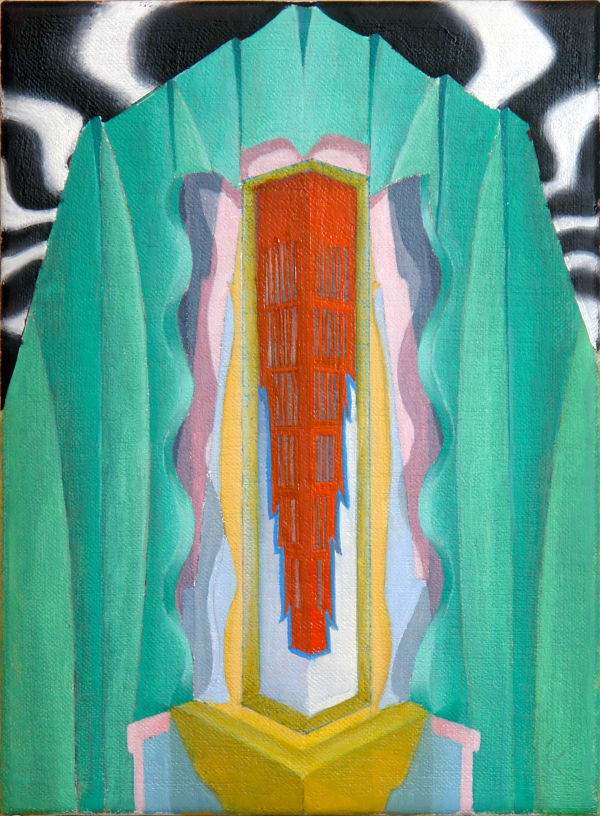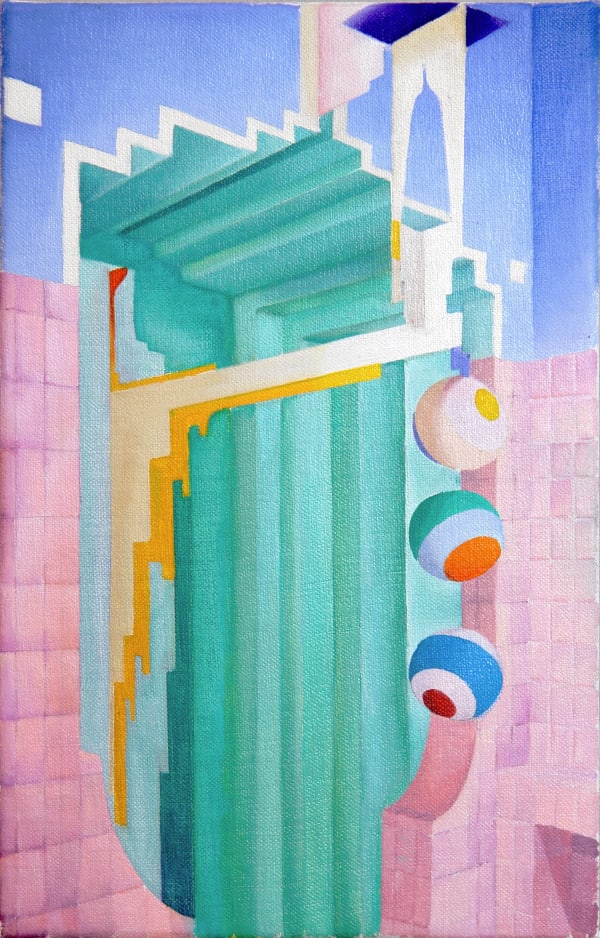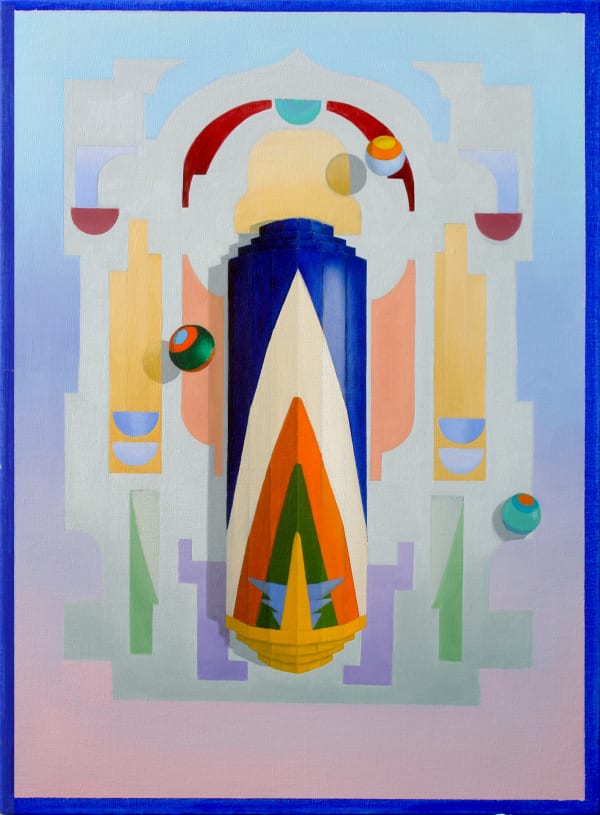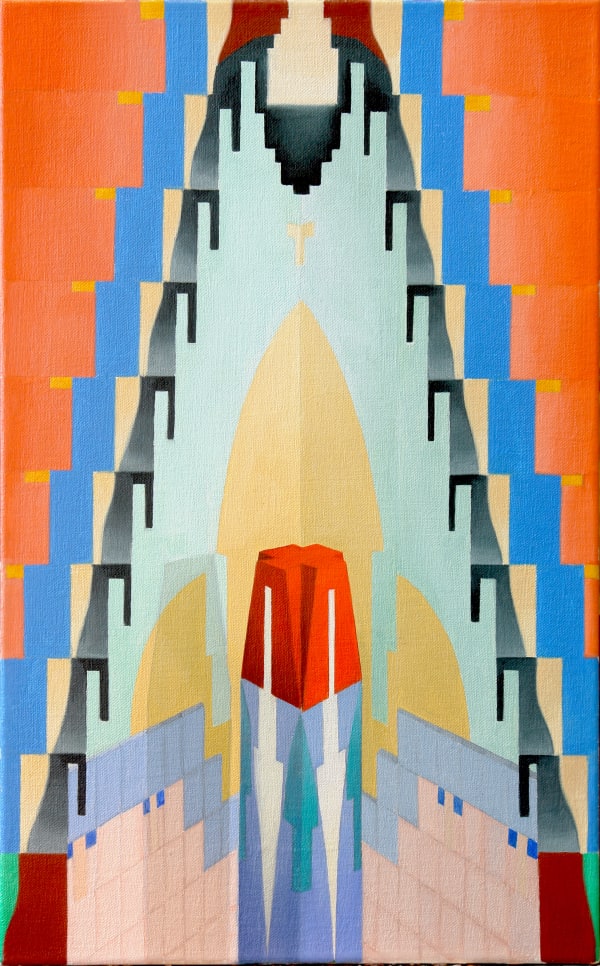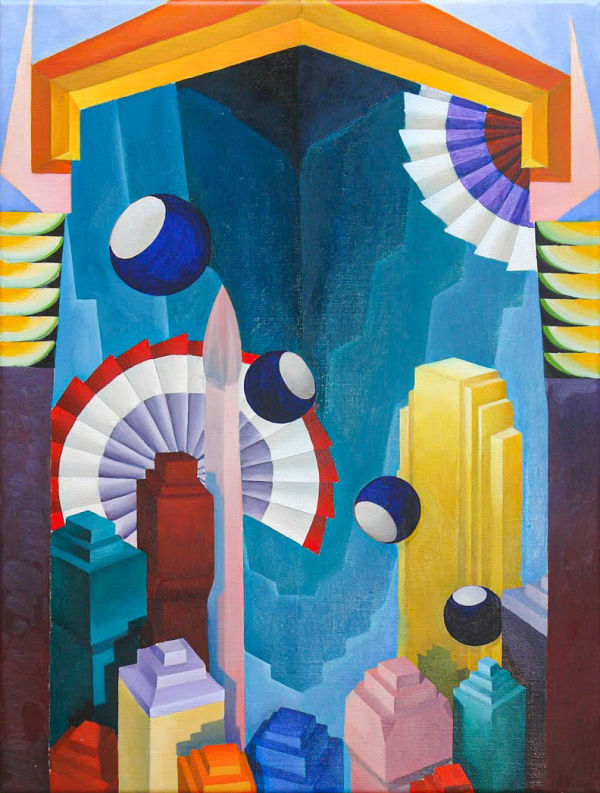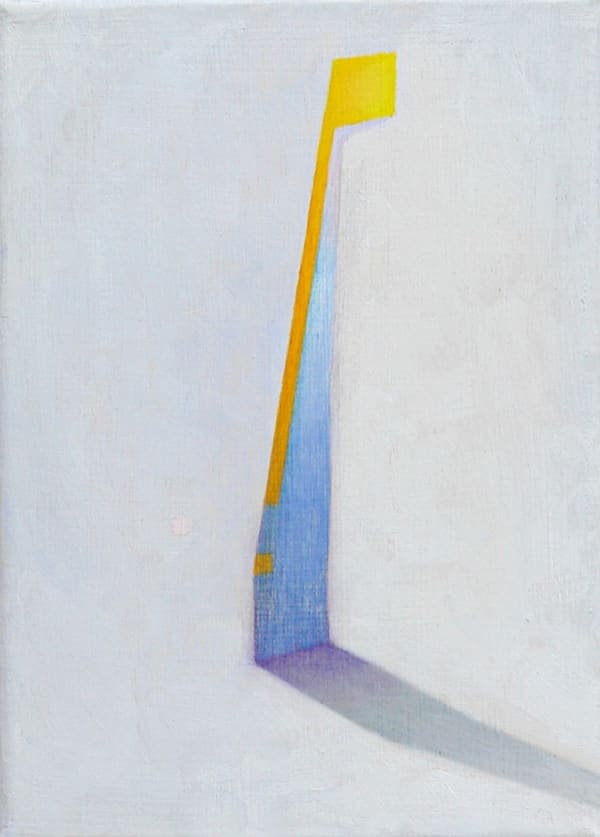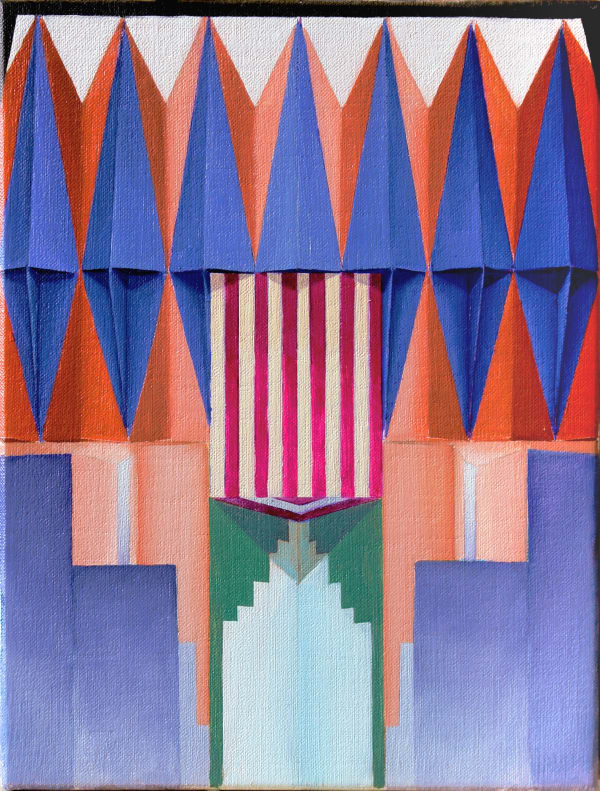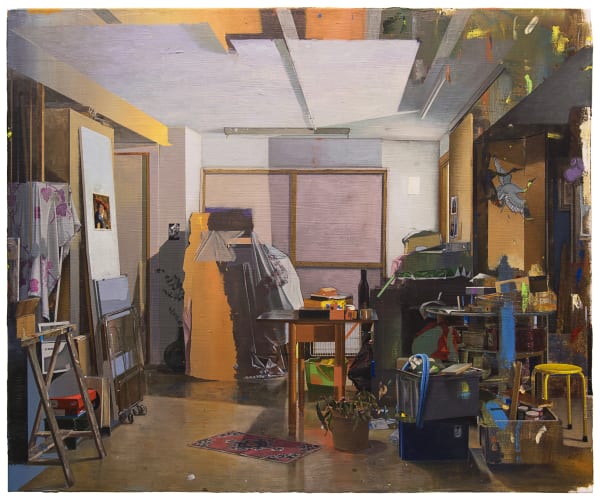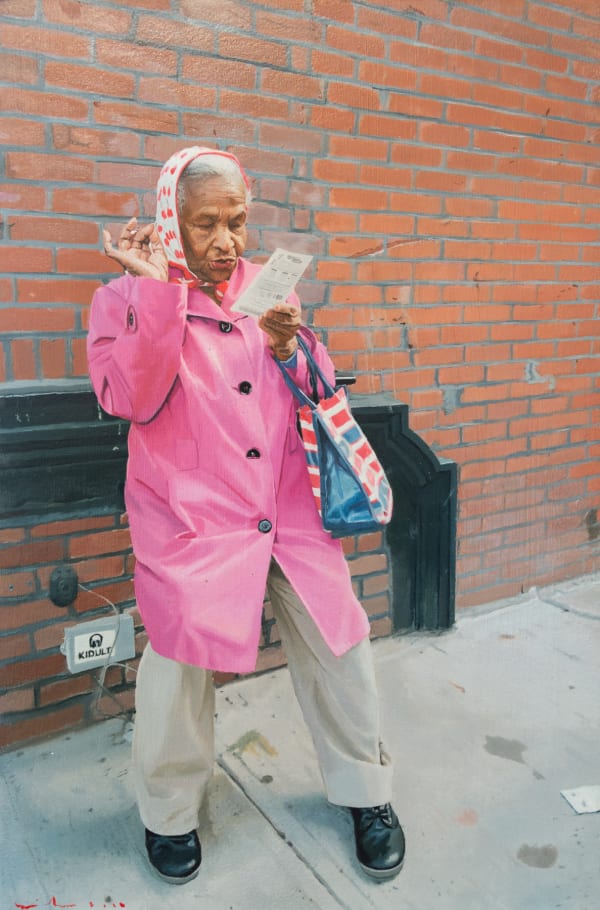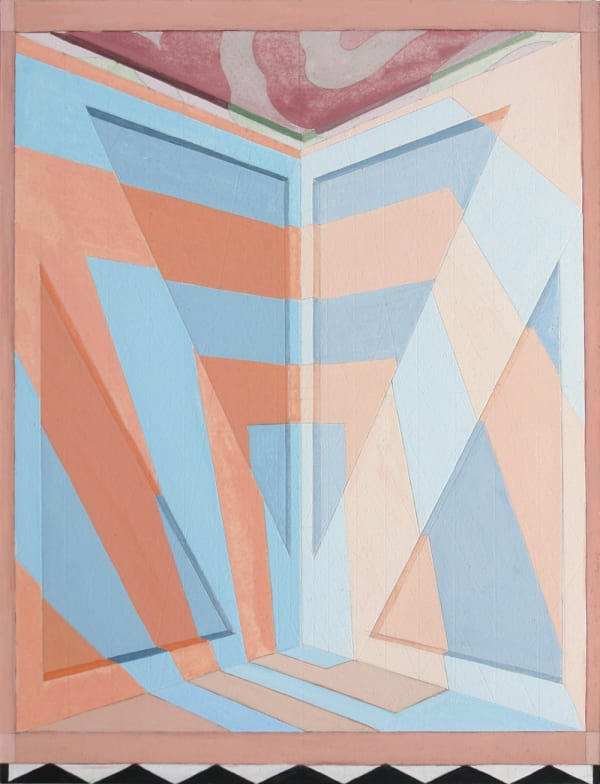Matthias Schaareman
Matthias Schaareman (born 1986, Arnhem) creates works on paper and oilpaintings that explore the tension between two- and threedimensional space. His forms draw inspiration from household objects, theaters, industrial heritage, and architectural ornaments. He is particularly influenced by the intricate patterns and shapes found in Arabic miniatures and Japanese woodblock prints, both for their precision and for the way these traditions approach perspective and space.
In Schaareman’s compositions, flat planes and vistas become stages where elements are arranged and rearranged in a collage-like process until the parts finally come together in balance.
Schaareman’s forms always carry a degree of abstraction. While their origins and contexts remain recognizable, he reshapes them; building, refining, and deconstructing, to give them an independent, autonomous presence.
A key feature of his work is the recurring use of graphic and decorative patterns. These motifs may function as backgrounds, but just as often they shape the spaces he depicts. Far from being purely ornamental, they also hold narrative and spatial significance.
Much of Schaareman’s work begins without a fixed plan. A windowsill’s angle, the discovery of a new color, or the pattern of a fabric can spark a painting. Some works take months or even years to complete; whether because a crucial element only appears later or because he must find the resolution to make the final move.
His process is inscribed in the paintings themselves: layers of paint are repeatedly applied and scraped away, while the underlying graphic structures used to generate patterns remain visible in the finished piece. This layering of decisions and revisions gives each work its own history and presence.
-

Zona Maco 2026
4 - 8 Feb 2026We are proud to announce our debut at Zona Maco 2026 with a dual presentation featuring works by Matthias Schaareman and Johan de Wit. We look forward to welcoming you...Read more -

Art Toronto 2025
Find us at Booth C04 23 - 26 Oct 2025This year at Art Toronto 2025 we are presenting a vibrant and captivating booth showcasing new works by Yigal Ozeri, Jan Kuhlemeier, Matthias Schaareman and Zsofia Schwager. Yigal Ozeri (b....Read more -

Untitled Art, Houston 2025
Find us at Booth A32 18 - 21 Sep 2025We are proud to announce our upcoming participating in Untitled Art, Houston 2025! Founded in 2012, Untitled Art is a leading contemporary art fair taking place annually on the sands...Read more -

Art Rotterdam 2025
Find us at Booth G02 27 - 30 Mar 2025This year at ART Rotterdam, we are excited to present new works by the following artists: Matthias Schaareman, Steffen Kern, Christian Hellmich, Thijs Jansen and Dirk Hardy . Each artist...Read more -

Expo Chicago 2023
Booth #173 13 - 16 Apr 2023EXPO CHICAGO , The International Exposition of Contemporary & Modern Art, features leading international galleries alongside the highest quality platform for contemporary art and culture. In 2023, EXPO CHICAGO will...Read more -

EXPO Chicago 2022
7 - 10 Apr 2022EXPO CHICAGO, the international fair for Contemporary & Modern Art, will host the 9th edition in-person exposition from April 7-10, 2022 at Navy Pier. It features leading international galleries alongside...Read more -

THE PINK EDITION
19 Feb - 26 Mar 2022The perception and meaning of pink have changed over the years, going from one extreme to the other and have been present in both high and low culture. From renaissance...Read more -

Volta New York
4 - 8 Mar 2020VOLTA NEW YORK MARCH 4–8, 2020 NEW LOCATION: METROPOLITAN WEST VOLTA showcases contemporary positions by up-and-coming and mid-career artists with an emphasis on discovery, both for the curious newcomer and...Read more -

Untitled, Art. San Francisco
17 - 20 Jan 2020UNTITLED, ART is an international, curated art fair founded in 2012 that focuses on curatorial balance and integrity across all disciplines of contemporary art. UNTITLED, ART innovates the standard fair...Read more -

Art Rotterdam
6 - 10 Feb 2019For Art Rotterdam 2019 Rutger Brandt Gallery (booth 6) showcases three young and talented artists: Carlos Sagrera (1987, Madrid), Matthias Schaareman (1986, Arnhem) and Robert Barta (1975, Prague). All three...Read more -

Untitled, Art. Miami Beach 2018
5 - 9 Dec 2018Untitled, Art is an international, curated art fair founded in 2012 that focuses on curatorial balance and integrity across all disciplines of contemporary art. Untitled, Art innovates the standard fair...Read more -

VOLTA’14 BASEL
11 Jun - 16 Jul 2018VOLTA, Basel’s art fair for new international positions, debuted in 2005 as a collaboration between dealers and friends. The aim was to secure a platform for international galleries beyond young...Read more -

Art Paris
5 - 8 Apr 2018From April 5th-8th 2018, Art Paris Art Fair will bring together 142 galleries from 23 different countries in the spectacular setting of the Grand Palais. Diversity and discovery are the...Read more



